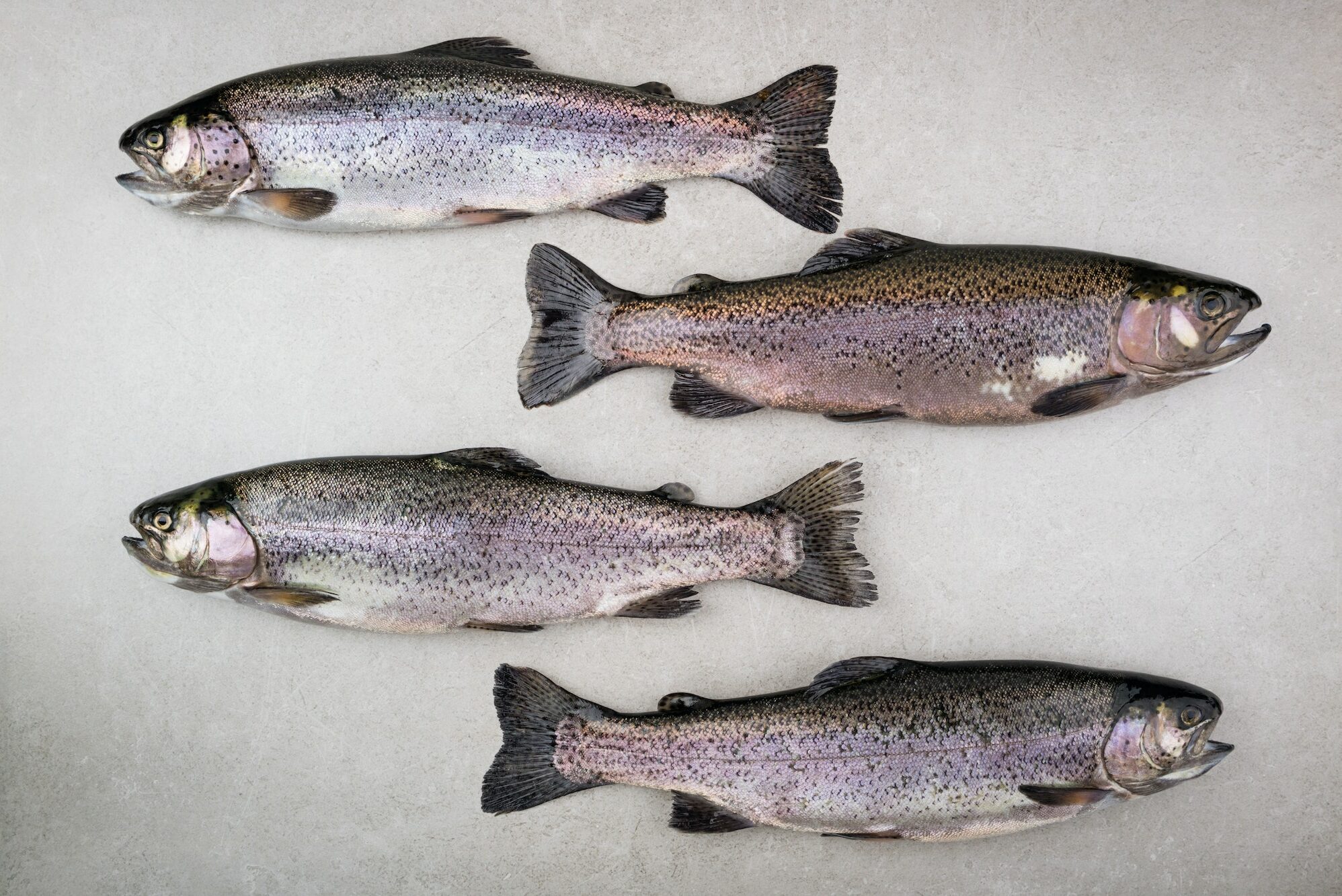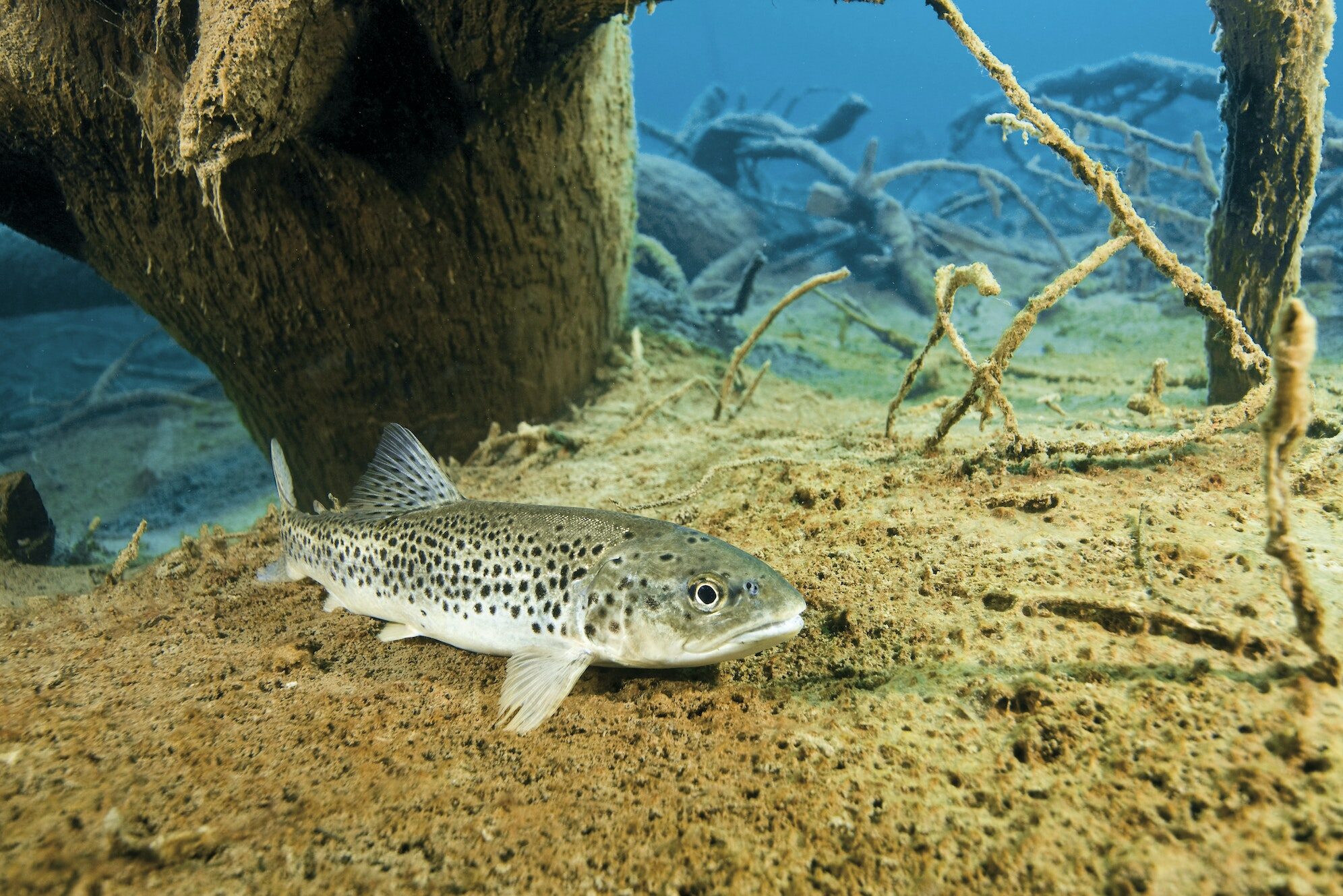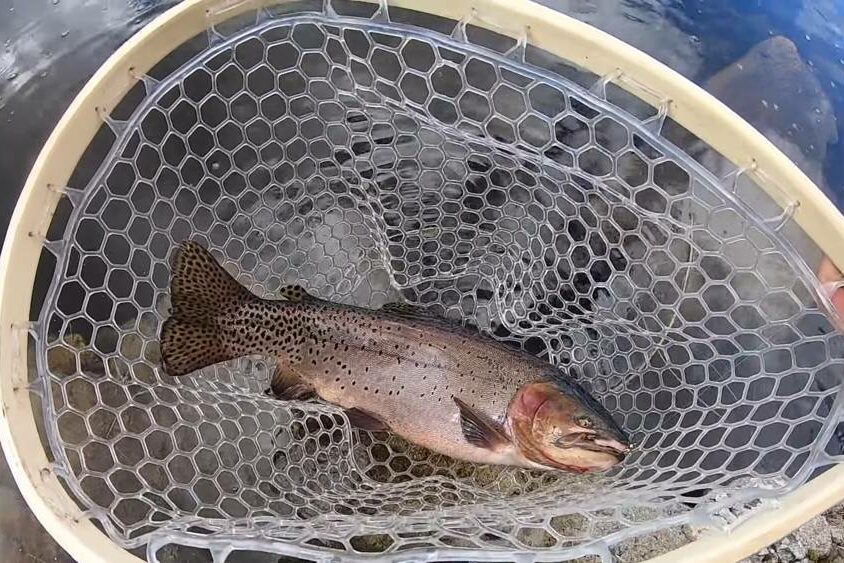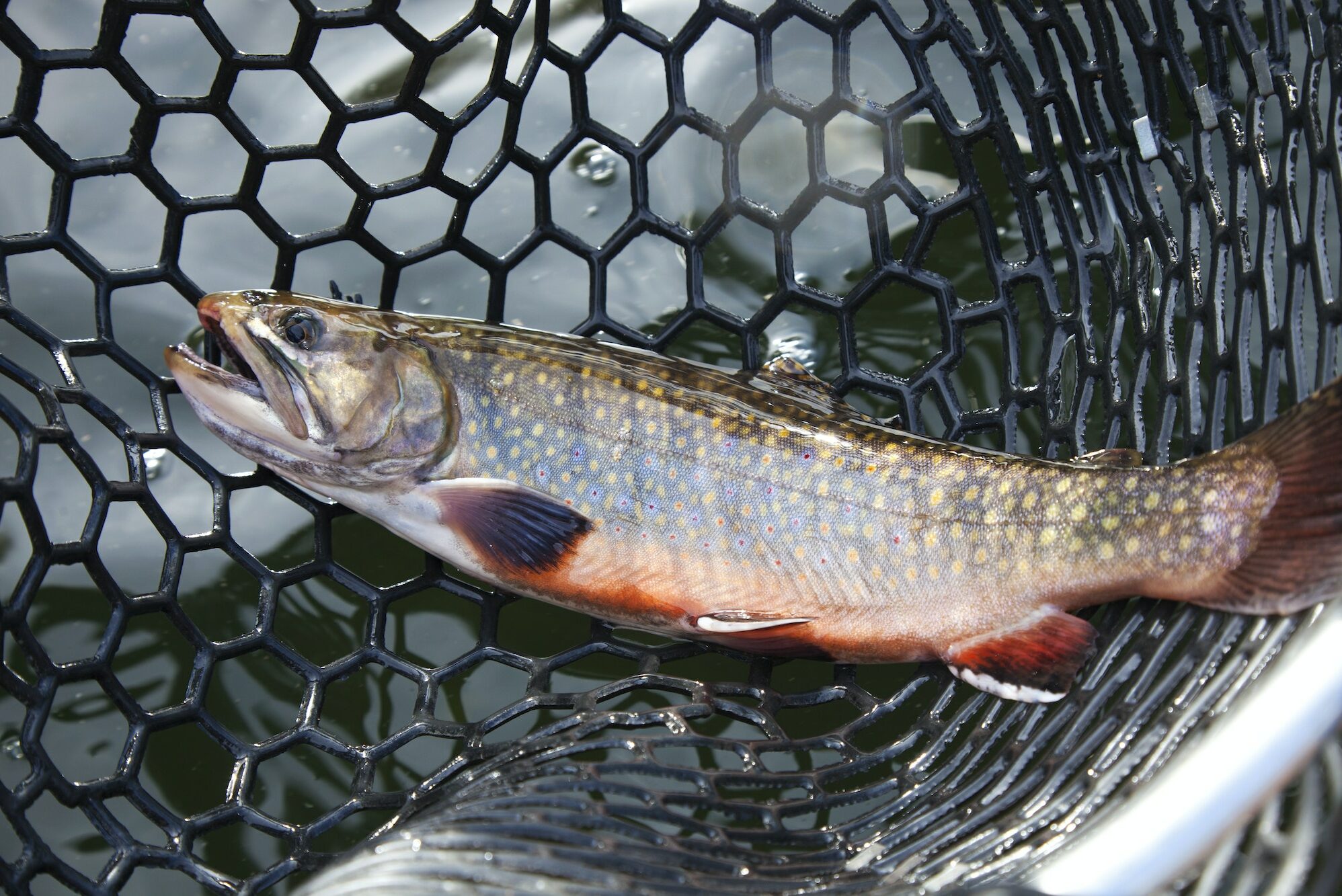Trout might be one of the most popular freshwater fish you can catch in North America and Europe. With their distinctive markings, trout are easy to identify, even for non-native fishermen.
There are different varieties of trout, and they are found in freshwater lakes, rivers, streams as well as mountain streams. There is also a variety of bait that you can use to catch them, such as live bait, artificial lures, and fly fishing.
When you’re trying to catch trout in lakes or rivers, there are a few things that you should know about these fish. First, they are not as aggressive as other fish you can catch in freshwater. This means they are more challenging to acquire, but it doesn’t mean they aren’t worth fishing for. Trout have a perfect sense of smell and taste, so you must use the right bait.
First, find out where they are located to catch trout in lakes or rivers. You can do this by observing the fish in the area and seeing where they are hiding. Trout like to hide under rocks, so you can use this as a clue when you’re trying to figure out how to catch trout.
Most common trout species
Rainbow Trout
Rainbow trout are one of the most popular types of trout. This specie of trout family is relatively easy to catch and taste delicious. Rainbow trout have a distinctive coloration that makes them easily recognizable.
They typically have a dark back with light spots on their sides. Their belly is usually white. You can find Rainbow trout in streams, rivers, and lakes all across North America.
Rainbow trout typically eat smaller fish, insects, and crustaceans. In terms of diet, they are not picky eaters. In the wild, rainbow trout can live up to 7 years old, but in captivity, they have been known to live up to 20 years old. The average size of rainbow trout is between 12 to 15 inches, but they can grow up to 24 inches in length.
Spawning typically occurs in the springtime when water temperatures start to rise. After the male rainbow trout fertilize the eggs, they will hatch after about three weeks time.
The fry (baby rainbow trout) will stay close to shore where there is plenty of food and shelter from predators for them to grow and mature before heading out into open water when they are about 6-8 inches long.”

Brown Trout
Brown trout are a species of freshwater fish that can be found in many different locations around the world. They have sleek, streamlined bodies built for speed and agility and are excellent swimmers. Brown trout prefer cold, clear water and can often be found in small streams or rivers.
They are carnivores and will eat anything, including small fish and insects. During a hatch, brown trout will cover any surface to find food. Brown trout can live up to 15 years in the wild, but their life expectancy is much shorter when raised commercially. Brown trout prefer clear water and cannot survive in polluted waters.
When the brown trout population gets too large, they move to another lake or river. Brown trout are a favorite among anglers because of their size and fighting ability. They can grow up to 5 pounds, but most are caught in lakes and rivers at about 10 inches long.
Brown trout can be found in lakes, streams, and rivers throughout the U.S., but they are most common in the western states.

Cutthroat Trout
The Cutthroat Trout is the smallest. It typically weighs no more than 6.57 kg (14 lbs. 8 oz.) and is found in fast-moving water. The Cutthroat Trout is known for its razor-sharp teeth and fighting abilities. It is a popular choice for many anglers due to its wide availability in different water types.
Cutthroat trout can grow to be over one meter (3.28 ft.) long and weigh over 31 kg (68 lbs.). The largest Cutthroat Trout ever caught weighed a whopping 38.1 kg (84 lbs.). This fish was caught in Alaska.
The Cutthroat Trout is a popular sport fish found throughout the United States, Canada, and Mexico. It has been introduced to areas outside of its natural range, including Europe.
The Cutthroat Trout is a carnivore and feeds on insects, small fish (including other trout), worms, crustaceans, and aquatic plants. It has a varied diet and is not picky.

Brook Trout
Brook trout are a type of trout that you can find in cool, quick-moving mountain streams. They tend to hide in pockets of slower water off the main current and under bank undercuts fed by the current.
Best baits for brook trout include live bait, worms, minnows, mealworms, etc. It is best to use either fly fishing or live bait (if permitted).
Brook trout can grow up to 12 inches and are typically yellow with black spots. They tend to live in deeper water around lakes or ponds. They prefer to eat insects, shrimp, and small fish such as chubs and suckers.
A few different types of lures are effective for catching brook trout. One type is a spinner bait, with a blade at the bottom and another at the top with hooks between them.

Best techniques for trout fishing in Lakes
There are many techniques for trout fishing. The best one includes:
Using Trout Magnet
A common technique for catching trout in lakes is to use a “trout magnet.” The most popular type of trout magnet is the Rapala, which looks like an oversized goldfish.
This lure is a favorite because it is easy to cast, can be reeled in quickly and quietly if the fish bite, moves well through weeds on the bottom of lakes and rivers, will stay afloat for a few seconds if it falls off the hook, and is available in a wide variety of sizes.
Using a bobber
A bobber is a small, lightweight device with hooks on either end and often a lead sinker in the middle. A fisherman will attach their bait to one hook and then drop it into the water. When the bobber floats to either side, they will pull on their line and hook a fish.
Fishing with Powerbait
Powerbait is a type of bait that has chemically altered the scent and flavor. PowerBait contains all-natural ingredients, but these have been enhanced with high levels of fish oils to make the bait more attractive to fish. This type of bait is primarily used for trout, which are attracted by its high protein levels and intense flavor.
Cast fishing
Cast fishing is the most popular and widely used method of trout fishing. It can be done with a spinning or fly rod, but it’s best to use a fly rod because you can cast a fly much further than you can cast a lure.
This method of fishing is simple. All you do is cast your line out into the water and then reel it in again when you feel a tug on the end of your line. You can throw into the water from a boat or shore and fish in lakes and rivers.
The best way to learn how to do this is by going fishing with someone who knows what they’re doing. If you know someone who knows how to fish, ask them if they’ll take you fishing with them sometime.
If not, check out the Internet for fishing forums or chat rooms. There are a lot of people out there who love to share their fishing knowledge with others.
Fishing with a spinning tackle
Fishing for trout in lakes and rivers is a very popular sport. A typical setup includes a spinning reel, a rod with a line, and a heavy enough lure to sink. Anglers use spinning tackle when they fish for trout on the bottom of deep-water lakes and rivers.
The fishing technique for trout in lakes is very simple: cast the bait out into deep water, then slowly reel it in. You can also cast the bait at a specific spot, such as an underwater rock ledge, and then slowly reel it in. This technique is called “drifting” or “trolling.”
Using Spoons
A spoon is a lure for fishing that easily resembles the shape of an actual spoon. It can be used in different water depths and, when it’s fished correctly, will attract trout because they are attracted to the flash of light that is created when it moves through the water.
A spoon will usually have a concave end with a metal lip on each side, and some spoons also have a lip on the concave end. The spoon will be attached to the fishing line by either a swivel or snap, and then you can add split shot weights, or other types of weights, to the line.
You can use the spoon for fishing trout by either casting it out or letting it sink. Or you can use a slow retrieve method where you hold on to your rod with one hand and use the other hand to drag the spoon through the water slowly.
The slow retrieve method is usually used in deeper waters where you want to present your bait to a specific area of water, and since the spoon will be moving slowly, you can drag it through specific areas of water.
Fly fishing
Fly fishing is an excellent technique for trout fishing that can be used in Lakes and Rivers. The best time to do this tactic is during the summer months when trout are most active because they feed heavily on insects at these times.
Trout are also most active when the water is warmer, so it’s important to fish at times of day during summer months when trout tend to be more lively and aggressive.
Fly fishing is a great way to catch trout in lakes and rivers because it’s an effective method that doesn’t require much equipment. To fly fish, you’ll need a rod, reel, line, leader, and fly. You’ll also need a fishing vest or pack to carry all your equipment in.
The best part about using the fly fishing technique is that it requires very little gear. It’s a great way to fish if you’re on a budget or don’t have much equipment. Fly fishing is also very effective because the angler can control what type of fly is used. This allows the angler to choose what fly will catch the fish best.
Best time to go trout fishing
According to the research, the best time to go trout fishing in lakes and rivers is during low light conditions, such as early morning and evening. Trout are also active during cloudy days if there is some sunlight left.
Weather can affect trout fishing, but most importantly, trout eat insects. Trout fishing is best when the conditions are right, including heavy rain. Trout fishing is best in early spring and fall when there are more insects to eat.
Best places to fish for trout
Some of the best trout fishing spots are in wild, unpolluted areas. Trout are attracted to healthy fish populations, so the best places to fish for trout vary depending on what you’re looking for. The best places to fish for trout are in different parts of the world.
You can find detailed descriptions of the best fishing places for trout online. Some popular trout fishing spots include the River Derwent in Tasmania, Australia; Lake Taupo in New Zealand; and River Severn in England.
When selecting a location for trout fishing, it’s important to consider the type of trout you hope to catch. Brown trout, for example, tend to prefer colder water than rainbow trout.
No matter where you choose to fish for trout, remember that they are a challenging species to catch. Patience and practice are essential when it comes to landing a big one!
Equipment for Trout Fishing
You will need a fishing license to fish for trout in lakes and rivers. You can buy fishing licenses at your local sports store. You will also need a fishing rod, reel, hooks, weights, and net. You can purchase a good rod and reel combination for around $20.
You don’t need to spend loads of money to get started fishing. Test fishing lines can be spooled onto the reel at a very low cost. The rod and reel should be able to handle the rated strength of the line. Sporting goods stores often carry high-quality lines in bulk. You can purchase a spool of line for as little as $5.
What does trout’s natural diet consist of in lakes and rivers?
As trout live in rivers and lakes, they have various food options available to them. If there is a lack of food available, trout won’t be able to grow as big as they should.
Smaller trout will typically eat aquatic bugs and those that fall into the water. They add other things to their diets as they grow bigger, such as crustaceans, leeches, worms, and small fish.
What are the best lakes for trout fishing?
Many lakes in the world have trout living in them. The best lakes for fishing for trout include those with a large amount of food available to the fish and those with a nice balance of predators, such as birds and other fish.
Lakes that have a large amount of food available to the fish are typically those where there is a lot of vegetation in the water or those where the water is shallow.
Some of the best lakes for fishing for trout include:
• The Great Lakes (Lake Superior, Lake Michigan, and Lake Huron)
• Lake Tahoe
• Lake Winnipesaukee
• Lake Erie, and
• The Finger Lakes.
While many lakes have trout living in them, not all of these lakes will be good for fishing for trout. Lakes with a lot of predators, such as birds and other fish, will make it harder to catch the trout because these predators continually chase them.
What rivers are best for trout fishing?
There are many great rivers in the United States for trout fishing, such as The Snake River, the Upper Connecticut River, and The Madison River.
Montana and Idaho are many of the best trout fishing rivers because many lakes feed into these rivers. The trout that live in these lakes will eventually swim down the river and into another lake.

